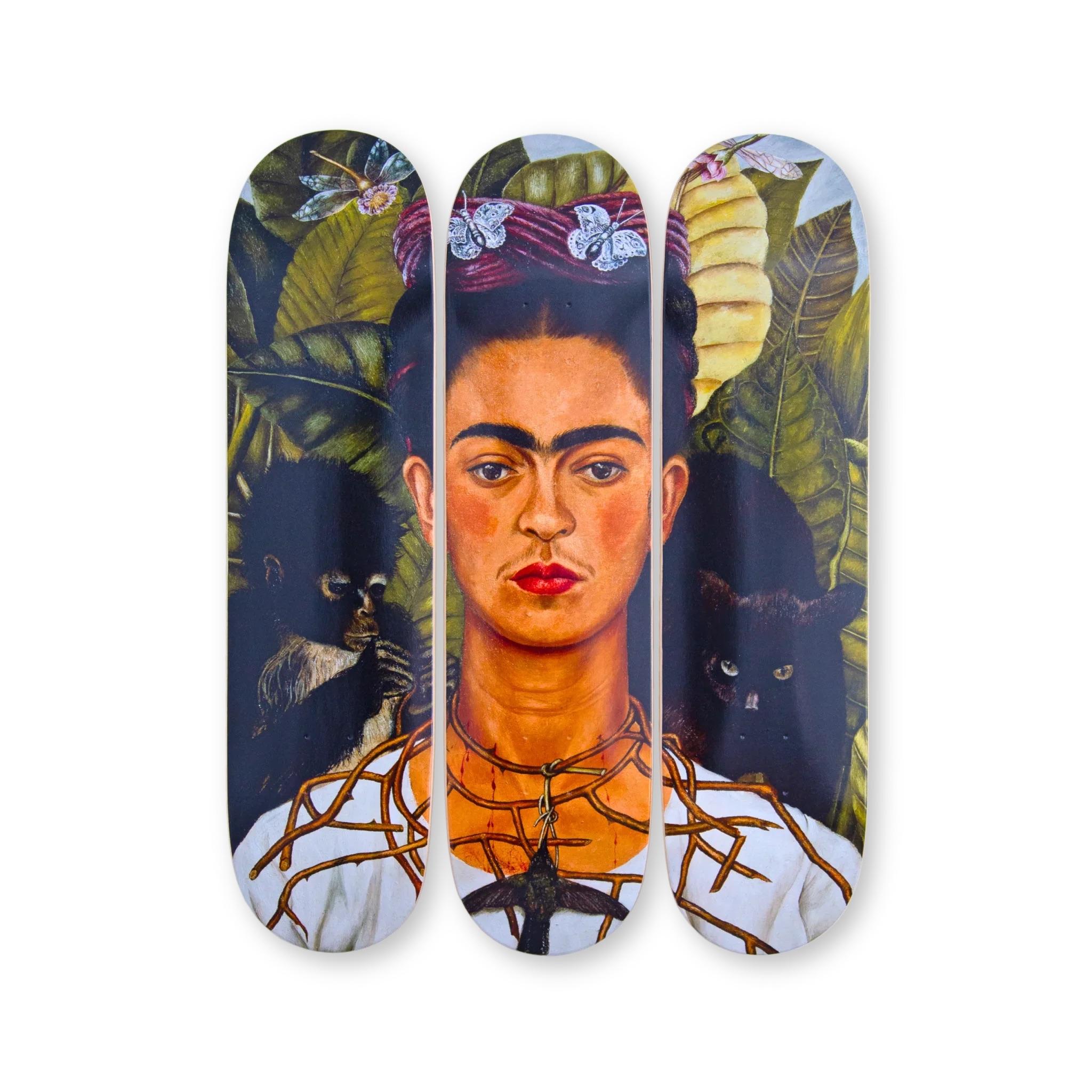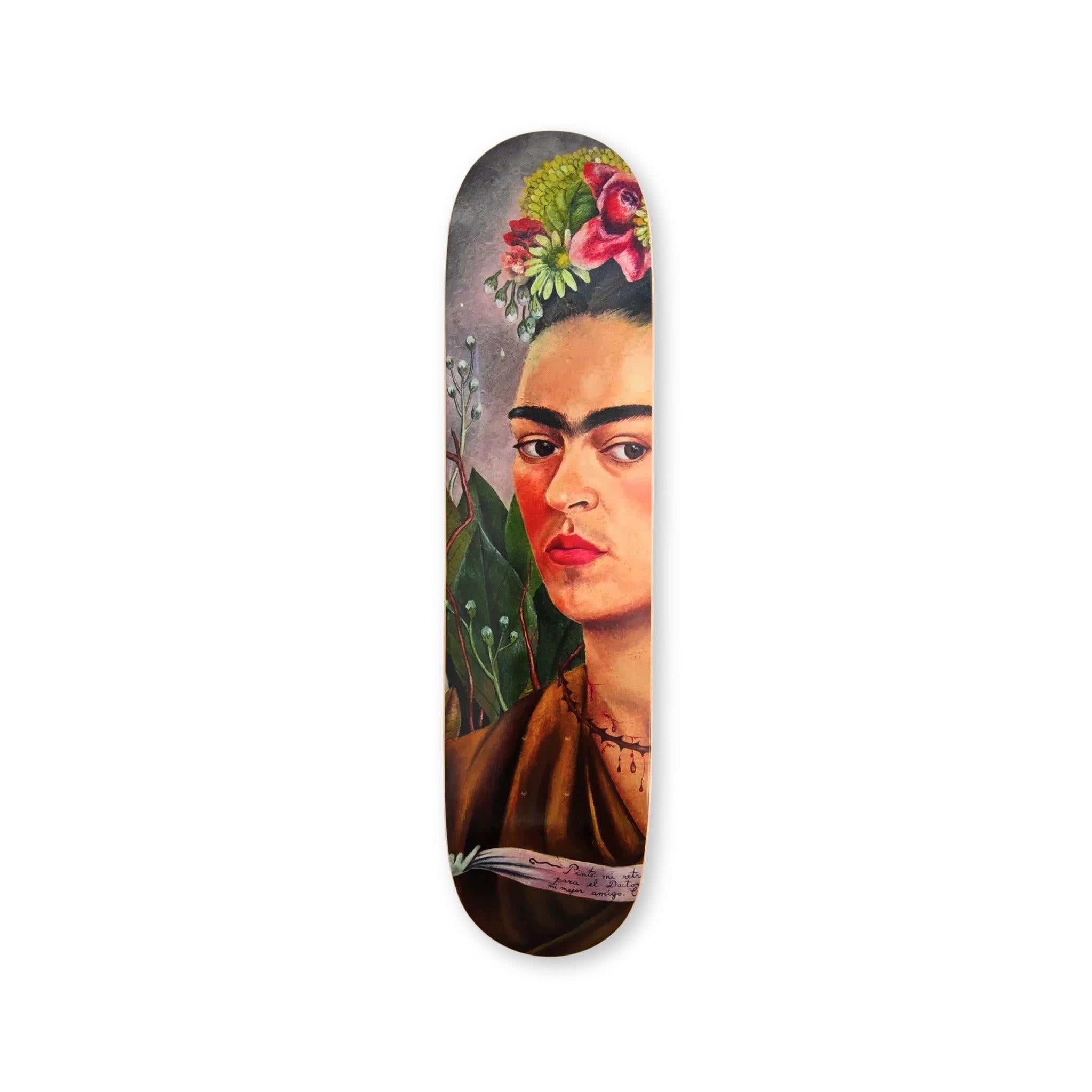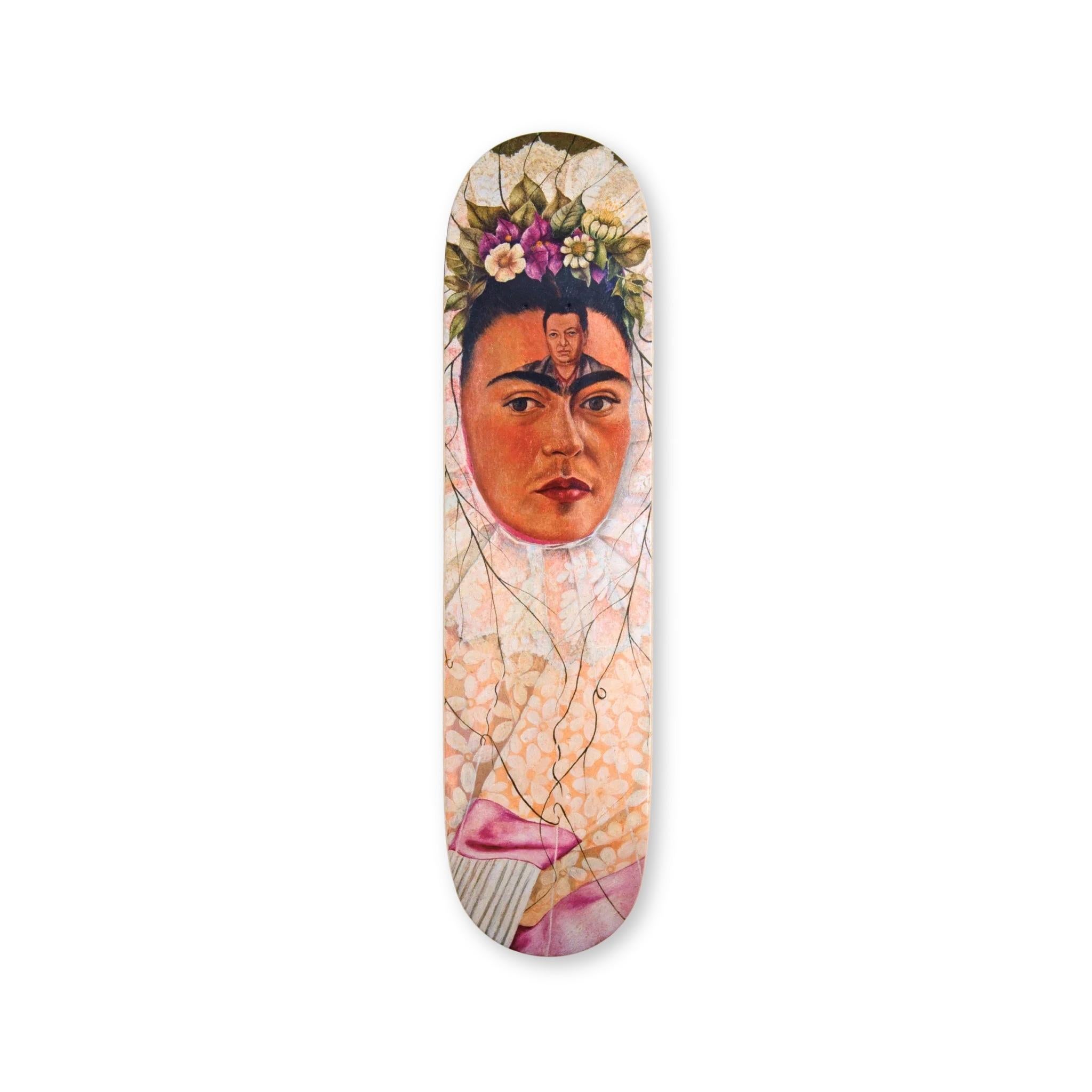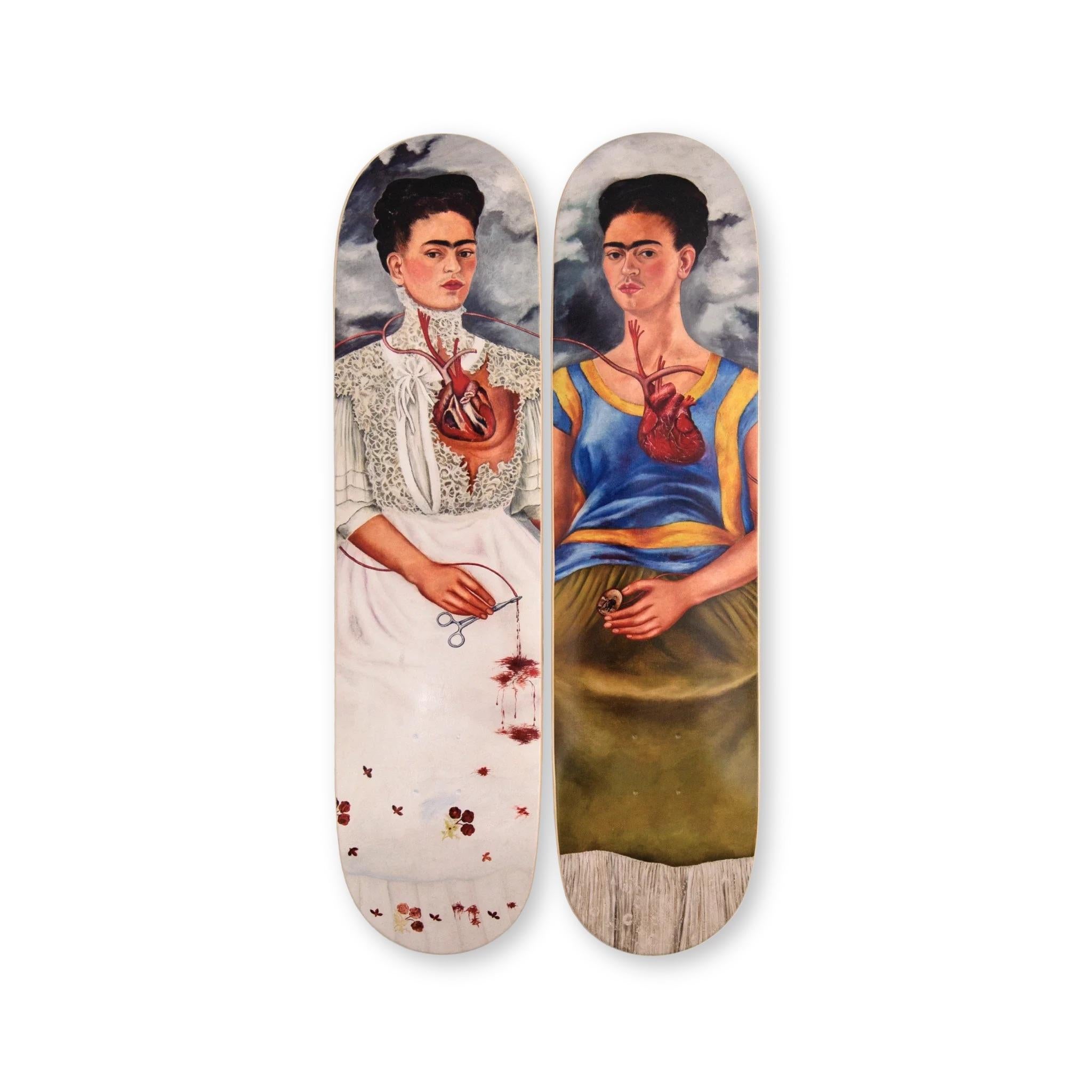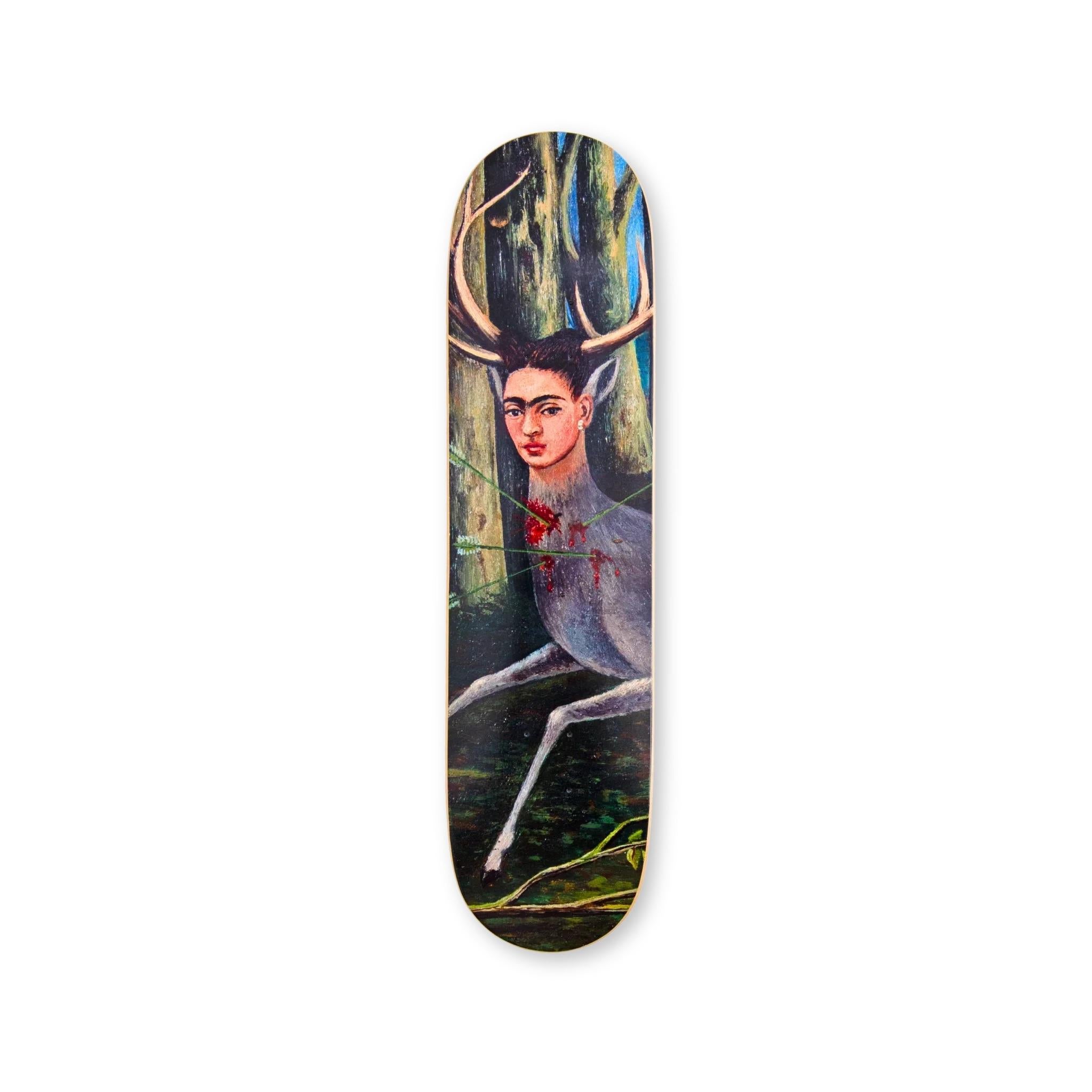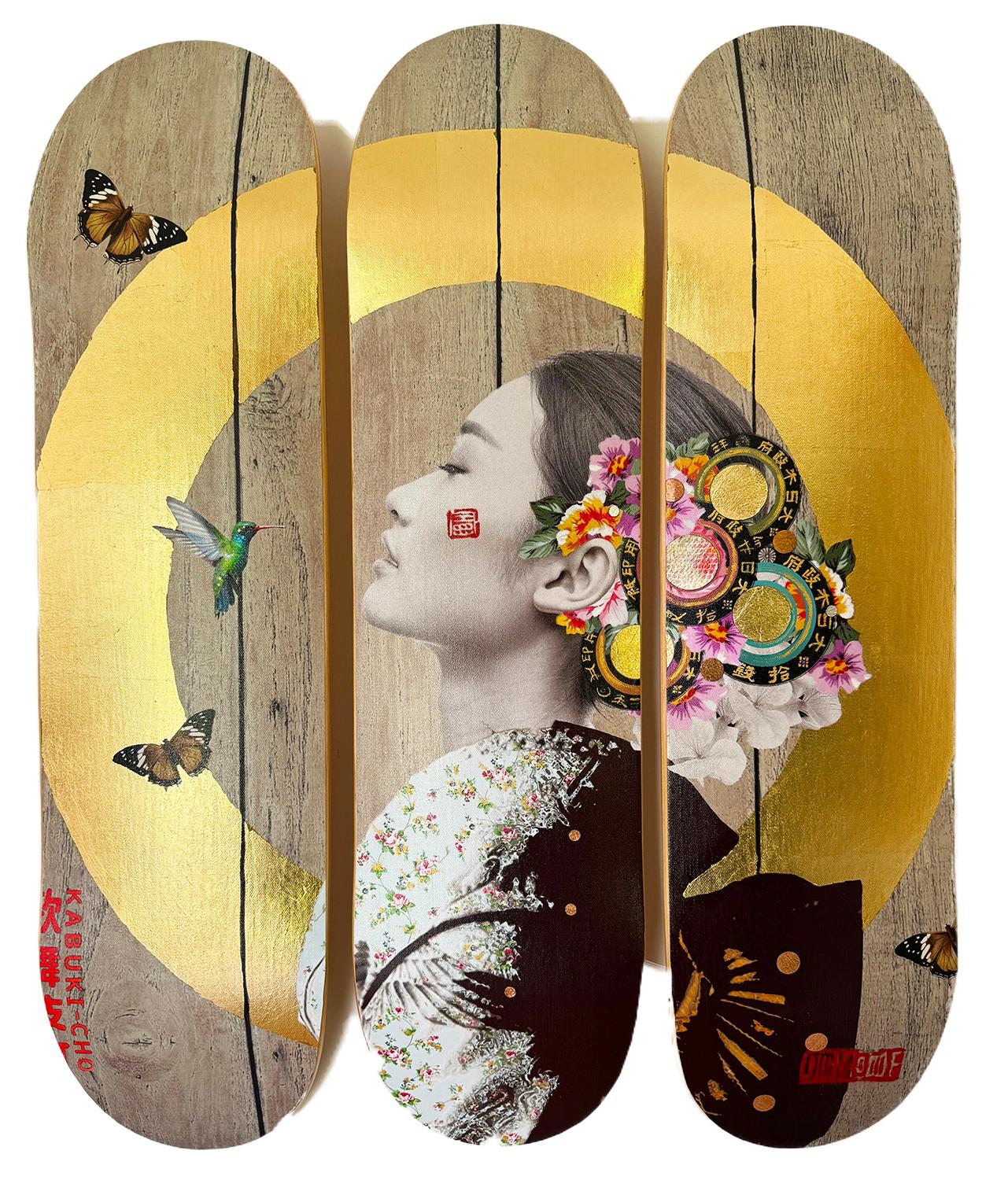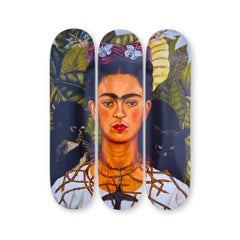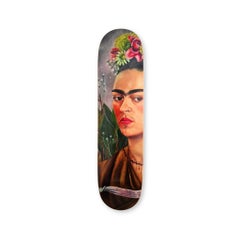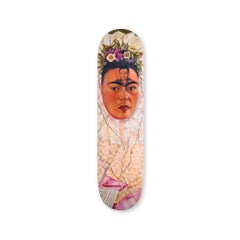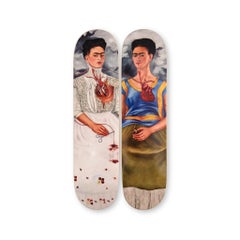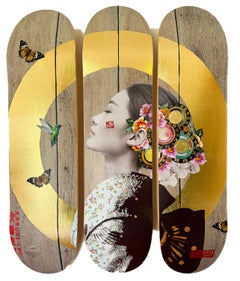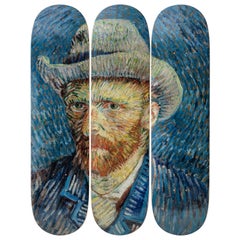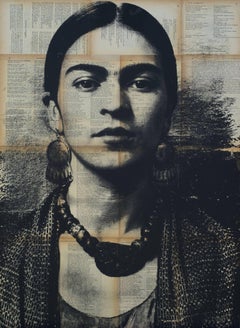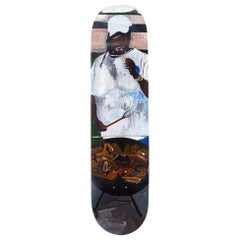Items Similar to FRIDA KAHLO - Me And My Parrots. Skate Deck Modern Design Pop American
Want more images or videos?
Request additional images or videos from the seller
1 of 3
FRIDA KAHLO - Me And My Parrots. Skate Deck Modern Design Pop American2025
2025
$981.23
£730.79
€825
CA$1,376.23
A$1,509.59
CHF 778.44
MX$18,030.52
NOK 9,872.95
SEK 9,261.95
DKK 6,288.51
About the Item
Frida Kahlo - Me And My Parrots
Date of creation: 2025
Medium: Digital print on Canadian maple wood
Edition: Open
Size: 80 x 20 cm (each skate)
Condition: In mint conditions and never displayed
This triptych is formed by three skate decks made of 7 ply grade A Canadian maple wood.
©2025 Banco de México Diego Rivera Frida Kahlo Museums Trust, Mexico, D.F. / Artists Rights Society (ARS), New York
Me and My Parrots (1941) is one of those self-portraits in which Frida Kahlo seems to say: “Yes, I have suffered, but look at me here—serene and majestic, surrounded by parrots like an exotic queen in her feathered court.” In this work, Frida appears with her characteristic direct and intense gaze, dressed in a simple white blouse that contrasts with the vibrant presence of the four parrots surrounding her. These birds, far from being mere tropical ornaments, seem to be extensions of her identity.
The parrots—two on her shoulders, one on her arm, and one perched on her chest—pose with an almost solemn stillness, as if aware they are part of a visual ritual. Frida, unflinching, holds them gently, as someone who has made nature a refuge and solitude a form of companionship.
The scene, though static, is full of life: there’s color, texture, and a sense of domesticated mystery. Frida doesn’t smile, but her eyes speak volumes. There is pride, weariness, but also a quiet strength that prevails.
Me and My Parrots is not just a portrait with animals; it’s a small allegory of independence and self-assertion. Because in Frida’s universe, even the parrots have something to say—and they say it with style.
ABOUT THE ARTIST
Frida Kahlo was born in the Blue House of Coyoacán, Mexico, in 1907—although she later claimed to have been born in 1910, aligning her birth with the start of the Mexican Revolution. It wasn’t vanity; it was a statement. Frida didn’t just live through time—she reimagined it with every brushstroke.
As a child, she contracted polio, leaving one of her legs thinner than the other. To compensate, she developed an even larger personality. But it was in 1925, when a streetcar accident shattered her spine, pelvis, and much of her body, that her life split in two—literally and symbolically. Most would have been defeated. Frida turned pain into language.
During her recovery, she began to paint. A mirror placed above her bed allowed her to transform her face into fertile ground for symbolism, memory, and resistance. She didn’t paint what she saw—she painted what she felt, remembered, endured. Her self-portraits were not simply likenesses but visual manifestos: her face framed by monkeys, thorns, flowers, roots, corsets, and, always, that singular unibrow—one bold line of unbroken thought.
In 1929, she married the muralist Diego Rivera, launching one of the most tempestuous love stories in art history. Their relationship was marked by infidelities, separations, and reconciliations—fuel for both drama and creativity. “I had two accidents in my life,” she once quipped, “one was the streetcar, the other was Diego. Diego was the worst.” And still, she loved him. In her own way.
Frida was political, communist, a voracious reader, a collector of traditional dress, a lover of men and women, a bold hostess, and a tireless provocateur. Her unique style—embroidered huipils, long skirts, floral crowns, and Indigenous jewelry—was not just fashion, but a cultural and personal declaration. Aesthetic and ideology intertwined.
Though she exhibited in Paris and New York and earned the admiration of figures like Picasso and Breton, during her lifetime she was often seen as “Diego Rivera’s eccentric wife” more than as an artist in her own right. It wasn’t until decades after her death in 1954 that her legacy truly exploded: feminist, queer, Latin American, unrepentantly original.
Today, Frida Kahlo is far more than an artist—she is a symbol of resistance, radical authenticity, and fierce beauty. Her legacy transcends museums and textbooks to live on in popular culture, street art, tattoos, fashion, and, above all, in the hearts of those who see in her the proof that art doesn’t need permission to be truth.
Frida never sought immortality. And yet, she found it.
- Creation Year:2025
- Dimensions:Height: 31.5 in (80 cm)Width: 23.63 in (60 cm)Depth: 0.79 in (2 cm)
- Medium:
- Movement & Style:
- After:Frida Kahlo (1907 - 1954)
- Period:
- Condition:
- Gallery Location:Madrid, ES
- Reference Number:1stDibs: LU1033116619442
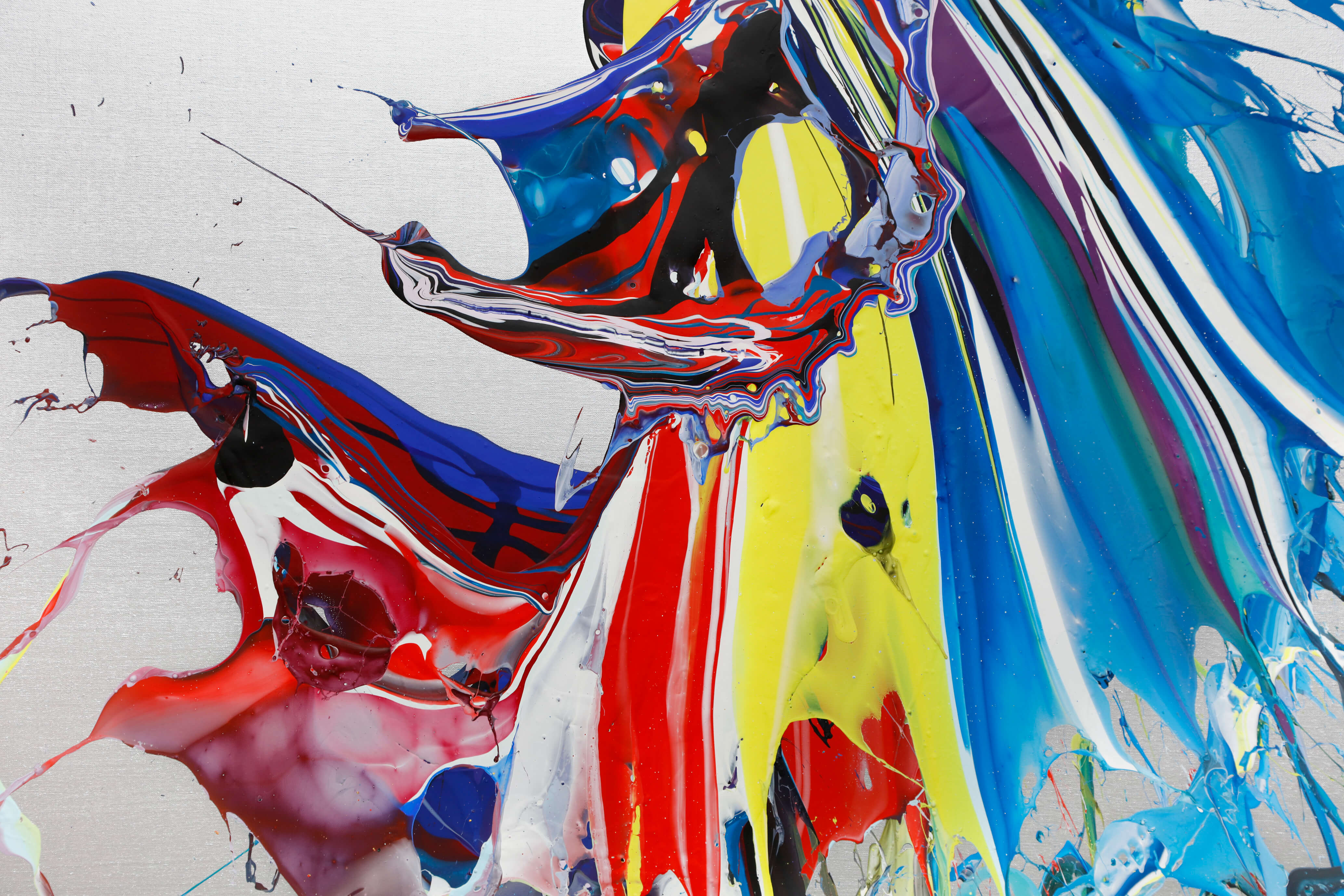
About the Seller
5.0
Gold Seller
Premium sellers maintaining a 4.3+ rating and 24-hour response times
Established in 2011
1stDibs seller since 2018
181 sales on 1stDibs
Typical response time: 14 hours
- ShippingRetrieving quote...Shipping from: Madrid, Spain
- Return Policy
Authenticity Guarantee
In the unlikely event there’s an issue with an item’s authenticity, contact us within 1 year for a full refund. DetailsMoney-Back Guarantee
If your item is not as described, is damaged in transit, or does not arrive, contact us within 7 days for a full refund. Details24-Hour Cancellation
You have a 24-hour grace period in which to reconsider your purchase, with no questions asked.Vetted Professional Sellers
Our world-class sellers must adhere to strict standards for service and quality, maintaining the integrity of our listings.Price-Match Guarantee
If you find that a seller listed the same item for a lower price elsewhere, we’ll match it.Trusted Global Delivery
Our best-in-class carrier network provides specialized shipping options worldwide, including custom delivery.More From This Seller
View AllFRIDA KAHLO Self-Portrait with Thorn Necklace... Skate Deck Modern Design Pop
Located in Madrid, Madrid
Frida Kahlo - Self-Portrait with Thorn Necklace and Hummingbird
Date of creation: 2025
Medium: Digital print on Canadian maple wood
Edition: Open
Size: 80 x 20 cm (each skate)
Condi...
Category
2010s Expressionist More Art
Materials
Wood, Maple, Screen
FRIDA KAHLO Self Portrait, Dedicated to Dr Eloesser Skate Deck Modern Design Pop
Located in Madrid, Madrid
Frida Kahlo - Self Portrait, Dedicated to Dr Eloesser
Date of creation: 2025
Medium: Digital print on Canadian maple wood
Edition: Open
Size: 80 x 20 cm
Condition: In mint condition...
Category
2010s Expressionist More Art
Materials
Wood, Maple, Screen
FRIDA KAHLO - Self-Portrait as a Tehuana Skate Deck Modern Design Pop
Located in Madrid, Madrid
Frida Kahlo - Self-Portrait as a Tehuana
Date of creation: 2025
Medium: Digital print on Canadian maple wood
Edition: Open
Size: 80 x 20 cm
Condition: In mint conditions and never d...
Category
2010s Expressionist More Art
Materials
Wood, Maple, Screen
FRIDA KAHLO - The Two Fridas. Skate Deck Modern Design Pop
Located in Madrid, Madrid
Frida Kahlo - The Two Fridas
Date of creation: 2025
Medium: Digital print on Canadian maple wood
Edition: Open
Size: 80 x 20 cm (each skate)
Condition: In mint conditions and never displayed
This diptych is formed by two skate decks made of 7 ply grade A Canadian maple wood.
©2025 Banco de México Diego Rivera Frida Kahlo Museums Trust, Mexico, D.F. / Artists Rights Society (ARS), New York
“The Two Fridas” (1939) is like a double portrait with emotional surgery: two Fridas, one with a broken heart and the other with a whole one, sitting side by side as if they had booked a couples therapy session… with themselves.
Each dressed to reflect a part of her identity—the European Frida in a Victorian lace dress...
Category
2010s Expressionist More Art
Materials
Wood, Maple, Screen
FRIDA KAHLO - The Wounded Deer. Skate Deck Modern Design Pop
Located in Madrid, Madrid
Frida Kahlo - The Wounded Deer
Date of creation: 2025
Medium: Digital print on Canadian maple wood
Edition: Open
Size: 80 x 20 cm
Condition: In mint conditions and never displayed
S...
Category
2010s Expressionist More Art
Materials
Wood, Maple, Screen
JEAN-MICHEL BASQUIAT - In Italian. Skate Decks Pop Urban Art Design
By Jean-Michel Basquiat
Located in Madrid, Madrid
Jean-Michel Basquiat - In Italian
Date of creation: 2024
Medium: Digital print on Canadian maple wood
Edition: Open
Size: 80 x 20 cm (each skate)
Condition: In mint conditions and never displayed
This triptych is formed by three skate decks made of 7 ply grade A Canadian maple wood.
© Estate of Jean-Michel Basquiat. Licensed by Artestar, New York
In Italian (1983) is one of Jean-Michel Basquiat’s iconic works, created during a peak period of his artistic career. The piece reflects his distinctive style, blending graffiti, expressive brushwork, text, and symbolism. Like many of his paintings, "In Italian" presents a powerful and chaotic composition where words, figures, and signs interact in a raw and energetic visual language.
The title, In Italian, may suggest a reference to classical European culture—especially Italian Renaissance art—while at the same time subverting it through Basquiat’s urban, Afro-Caribbean perspective. His interest in contrasting high and low culture, refined and raw, is evident in this piece. The inclusion of text, often fragmented or cryptic, was one of Basquiat’s trademarks and serves here to provoke thought rather than deliver a clear message.
In this work, Basquiat explores themes such as identity, language, cultural heritage, and the appropriation of symbols. The figure depicted—alongside the textual elements—appears almost mythological or totemic, reinforcing Basquiat’s tendency to elevate marginalized characters into powerful, almost divine figures.
The brushstrokes are urgent, the colors bold, and the composition layered. It’s as if the viewer is meant to decipher a code—a mix of history, race, rebellion, and irony. Words in different languages, especially English and Italian, appear not to clarify meaning but to complicate it, suggesting the multilingual, multicultural environment Basquiat inhabited and commented on.
In Italian is a prime example of how Basquiat merged influences from the streets of New York with art history, African-American identity, and global culture. It's a bold visual statement that challenges traditional canons and forces the viewer to reconsider what art is, who gets to create it, and which voices are heard.
ABOUT THE ARTIST
Jean-Michel Basquiat (1960-1988) was one of the most influential artists of the 20th century, famous for his ability to fuse urban culture, social criticism and art history into a unique style. Born in Brooklyn, New York, to a Haitian father and Puerto Rican mother, his life and work were shaped by his multicultural heritage, the New York art scene and the social tensions of his time. Although his career was brief, his impact on contemporary art has been lasting and significant.
Basquiat showed an interest in art from an early age. His mother, Matilde Andrades, took him to museums and encouraged him to draw. At the age of seven, a car accident left him hospitalized for a time, and it was then that his mother gave him a copy of the anatomy book Gray's Anatomy, which influenced his fascination with the human body and its visual representation.
Despite his early talent, Basquiat's family life was turbulent. His mother was hospitalized for psychiatric problems and his relationship with his father, Gerard Basquiat, was troubled. This instability contributed to Basquiat dropping out of school at age 17 to pursue his artistic career on the streets of New York.
As a teenager, Basquiat joined the New York graffiti scene under the pseudonym SAMO (an acronym for "Same Old Shit"), which he used to sign his cryptic and poetic messages on the streets of Manhattan with his friend Al Diaz. SAMO's graffiti were a mixture of philosophical and social commentary on popular culture, capitalism and religion, and soon attracted the attention of the underground art scene.
In 1980, SAMO "died" when Basquiat and Diaz decided to end their collaboration, marking the beginning of Basquiat's transition from street graffiti to art galleries.
Basquiat emerged as a talent to watch in 1980, when he participated in the group exhibition The Times Square Show, which included other emerging artists from New York's Lower East Side scene. That same year, he attracted the attention of critics and collectors who saw in his work an electrifying blend of street art and neo-expressionism, the predominant movement of the time.
In 1981, art critic René Ricard published the influential essay The Radiant Child in Artforum magazine, which positioned Basquiat as one of the most promising artists of his generation. Shortly thereafter, he met renowned artist Andy Warhol, with whom he formed a close friendship and significant artistic collaboration. This association was instrumental in catapulting his career into the world of high art.
The collaboration with Warhol was a pivotal point in Basquiat's career. The two artists, although coming from very different worlds, shared a fascination with fame and popular culture. Together, they produced a series of works that combined Warhol's pop art icons with Basquiat's raw, spontaneous style.
However, this collaboration was also a source of controversy. Many critics accused Warhol of "exploiting" Basquiat, while others saw the collaboration as a creative dialogue between two genius minds. Although the criticism was mixed, there is no doubt that the relationship between the two artists helped cement Basquiat's reputation in the art world.
Basquiat's style is a unique amalgam of influences. His work is characterized by the use of dismembered human figures, skeletons and internal organs, evoking the fragility of the body and mortality. Basquiat also used symbols that alluded to African-American and African history, such as crowns, masks and references to historical figures such as Toussaint Louverture.
The use of text is another crucial aspect of his work. Words, phrases and numbers appeared in his paintings, often crossed out or overlapped, creating a sense of controlled chaos. These fragmented words provoked a non-linear reading of his works and conveyed multiple layers of meaning.
His art also reflected his concerns about racial issues, especially the place of people of African descent in Western art history and in society at large. The crowns that Basquiat often drew on his figures were a symbol of power and resistance, a way of proclaiming himself "king" in a world that had historically excluded black artists from the upper echelons of art.
In works such as The Death of Michael Stewart...
Category
2010s Pop Art More Art
Materials
Wood, Digital
You May Also Like
Patience New Rose with Hummingbird’ Skate Deck Trio
Located in Nottingham, GB
Skate Deck Trio. 3 x 7 Ply Premium ‘Venom’ Canadian Maple skate decks. Each deck is 21cm x 84cm. Total artwork is approximately 65cm x 84cm.
Design is a Giclee canvas hand pressed o...
Category
2010s Contemporary Mixed Media
Materials
Mixed Media
Self-Portrait Skateboard Decks after Vincent van Gogh
By Vincent van Gogh
Located in Jersey City, NJ
The Skateroom with the Van Gogh Museum
set of three skateboard decks
7-ply Canadian maplewood with screenprint
Measures: each: 31 H x 8 inches
approx. 31 H x 24 inches when insta...
Category
2010s Belgian Wall-mounted Sculptures
Materials
Maple
Frida Kahlo, Mixed Media on Wood Panel
Located in Yardley, PA
Frida Kahlo Art on Plywood. Acrylic and vintage book pages adhered on plywood. Ready to hang. The dimensions are 32x24 inches and 1/2 inch thick. Signa...
Category
2010s Pop Art Mixed Media
Materials
Mixed Media
The 4th Skate Deck by Henry Taylor
By (After) Henry Taylor
Located in Jersey City, NJ
The 4th is released in a limited edition size of 100. Based on a 2012 13-feet tall piece composed of two stacked panels. As Tatiana Istomina describes the work, ‘The upper [panel] shows the monumental form of a black woman in a white T-shirt; she holds what looks like a potato chip...
Category
2010s Contemporary Art
Materials
Wood
Frida Kahlo . original painting
Located in Zofingen, AG
Frida Kahlo is an iconic Mexican artist and a great inspiration to me. She transformed her personal pain into art, a feat that resonates deeply with me. Her surrealistic artwork is c...
Category
2010s Pop Art Portrait Paintings
Materials
Canvas, Oil
Paul Insect I SEE Skateboard Deck Set Of 3 Beyond The Streets Signed XX/101 COA
By Paul Insect
Located in Draper, UT
Paul Insect:
Paul Insect is a UK contemporary artist. Best known for his collective named ‘insect’ that started in 1996 he is a collage, portrait master w...
Category
2010s Pop Art More Prints
Materials
Screen
